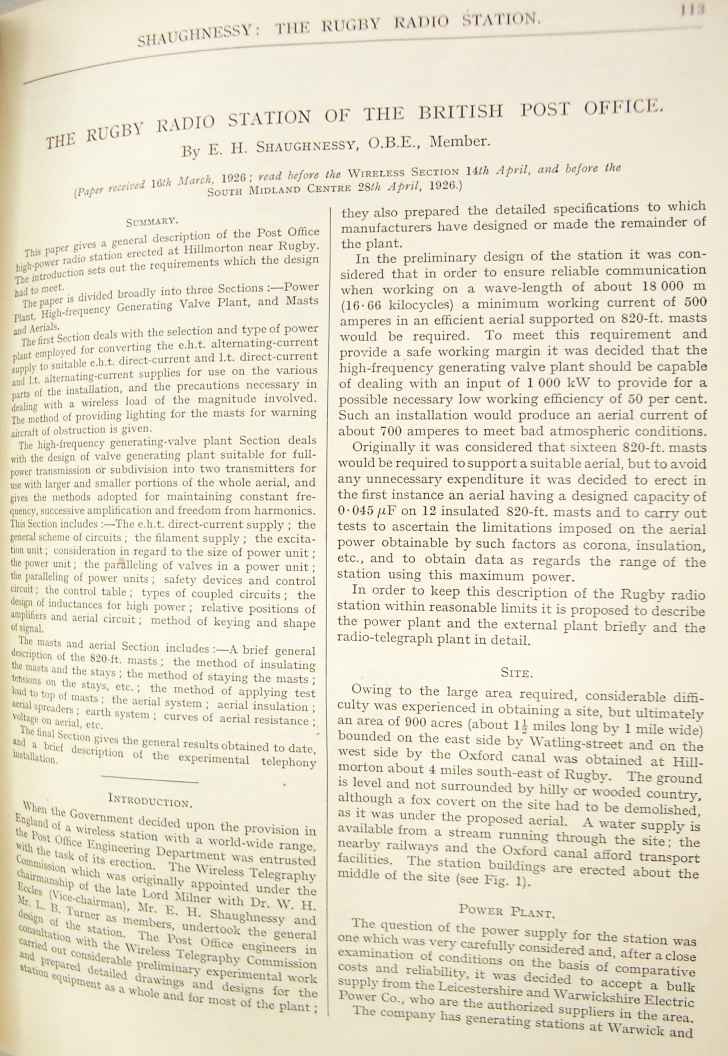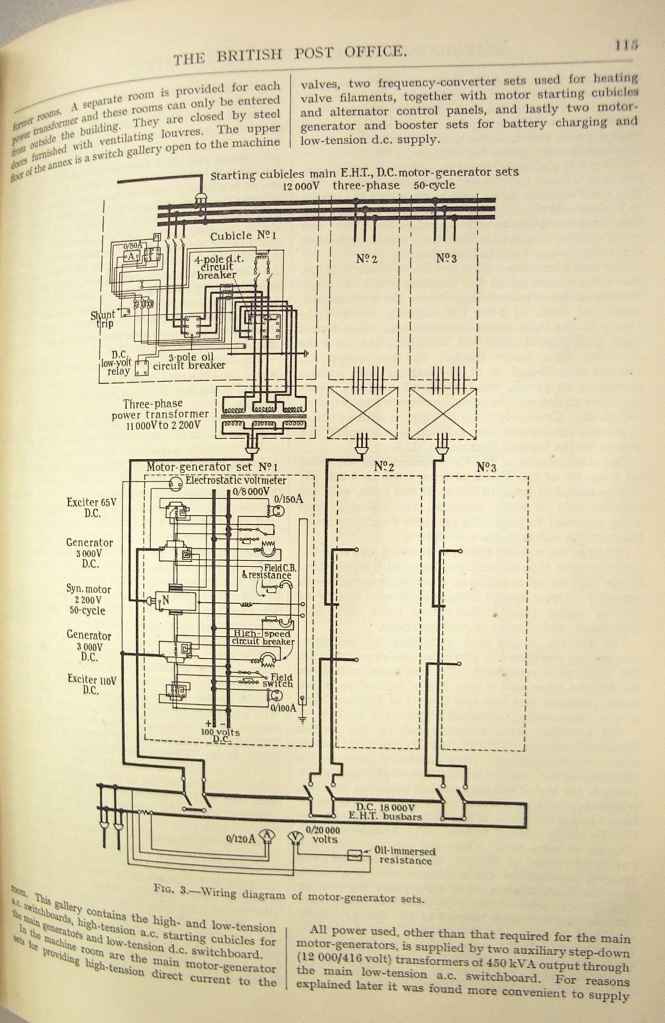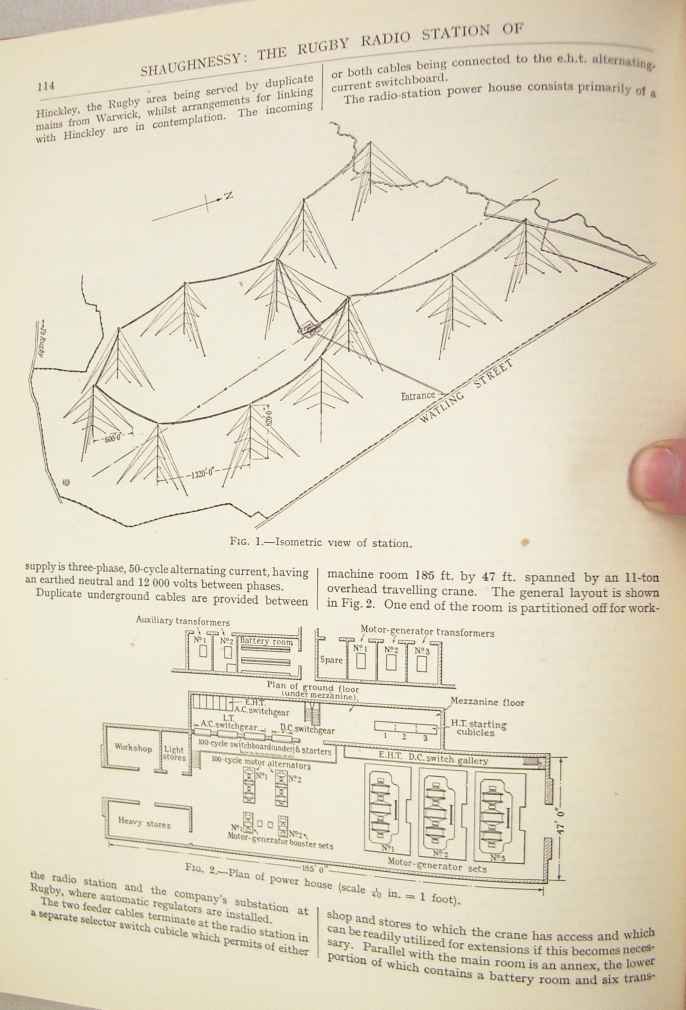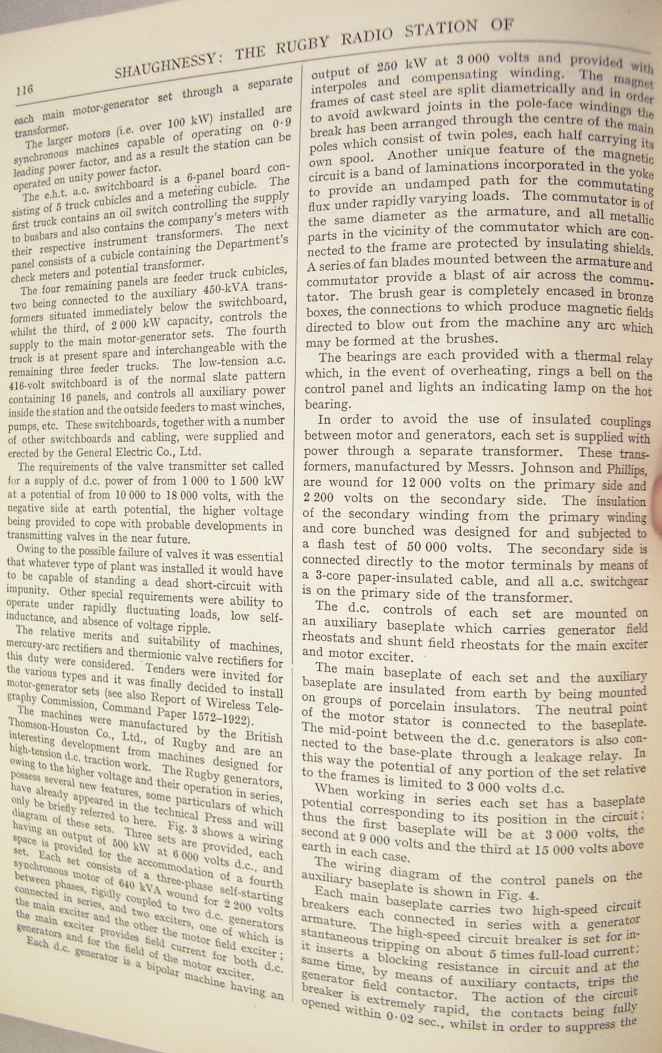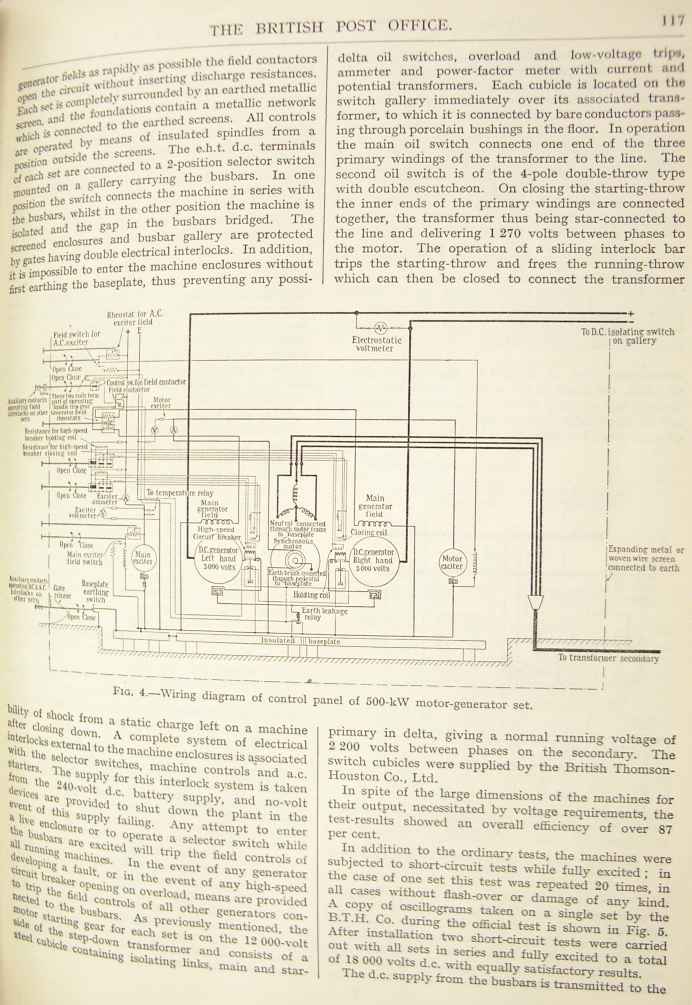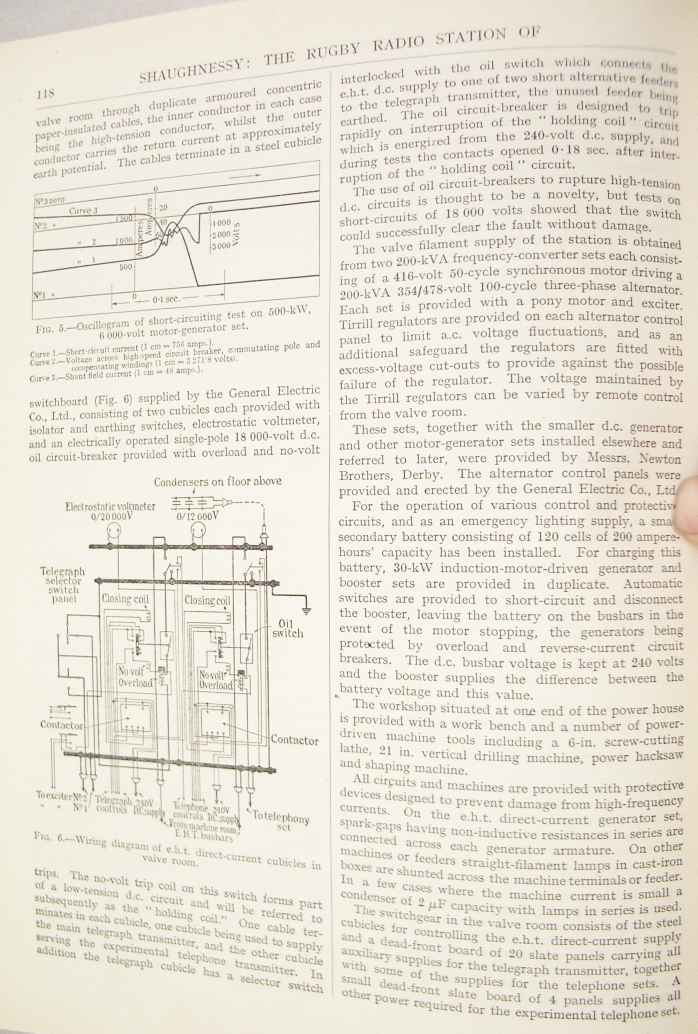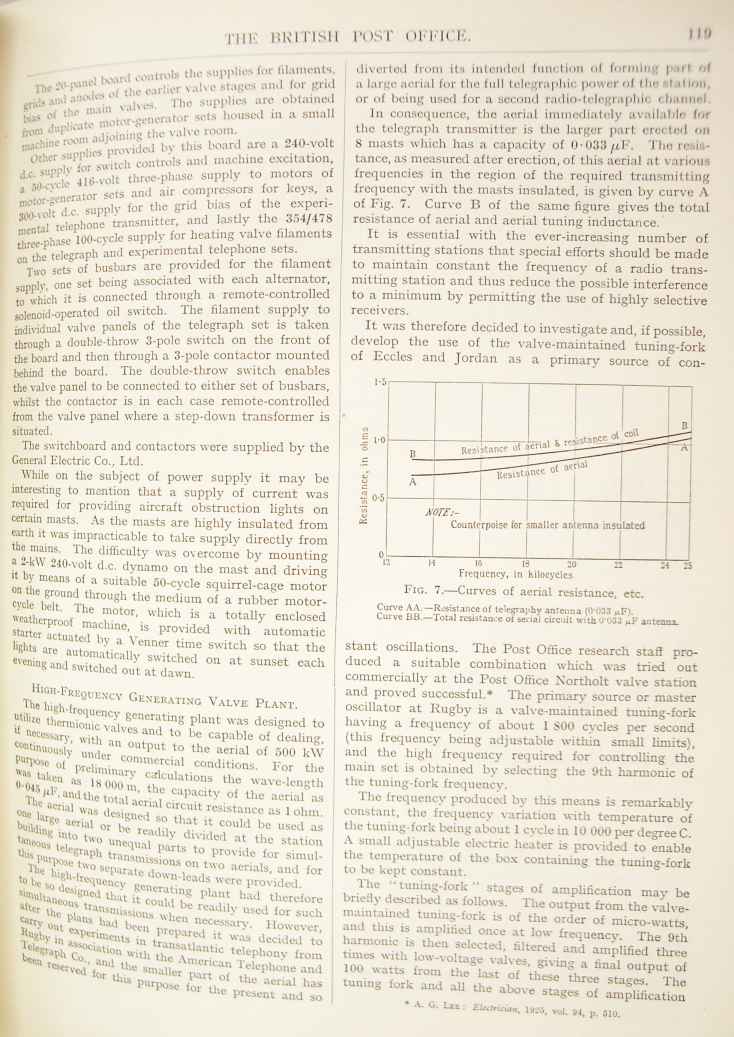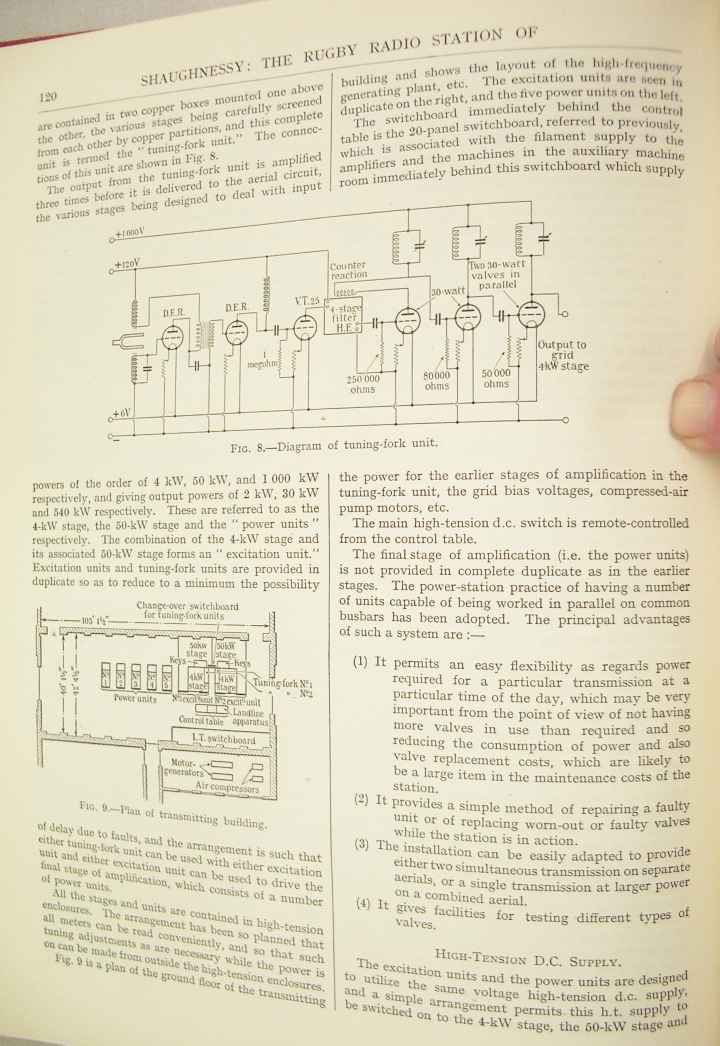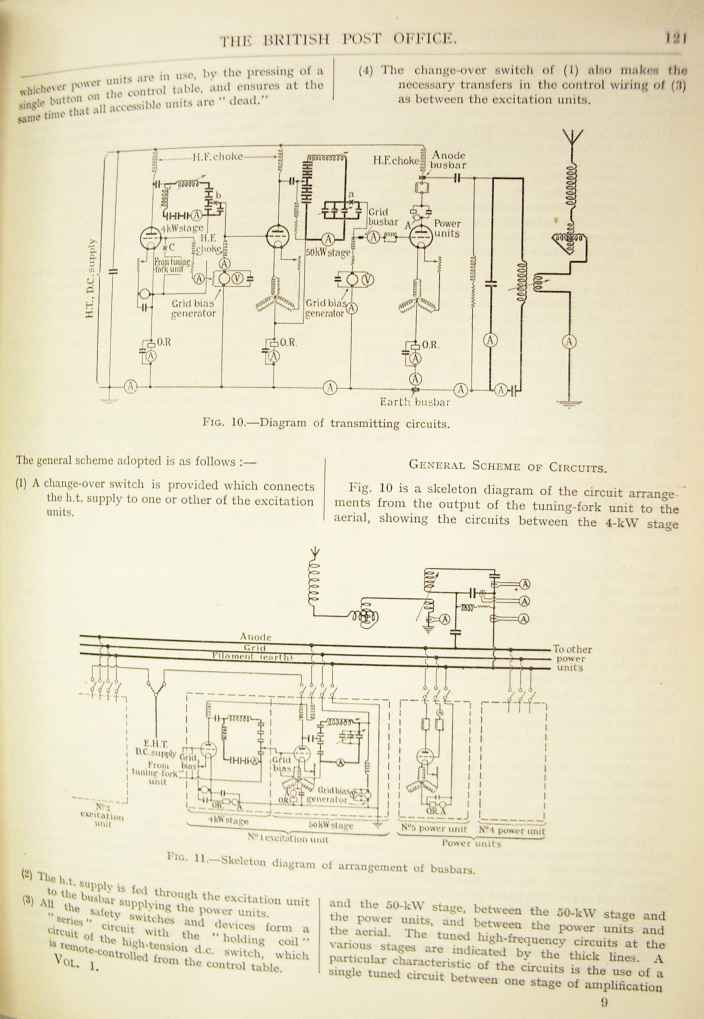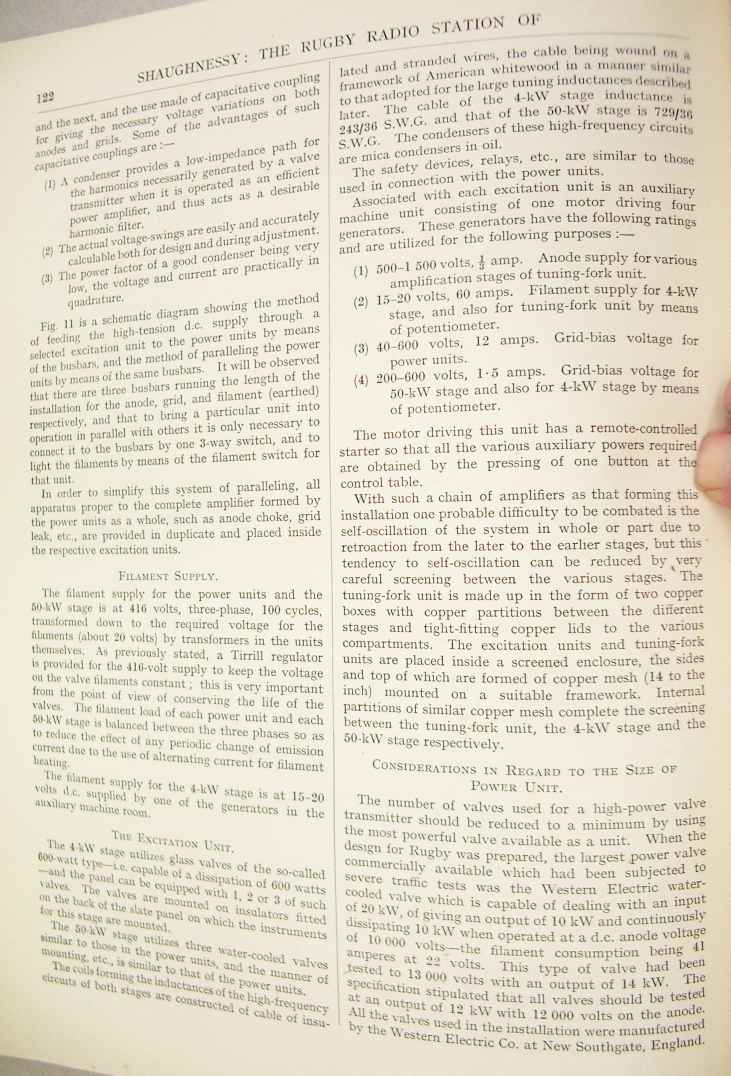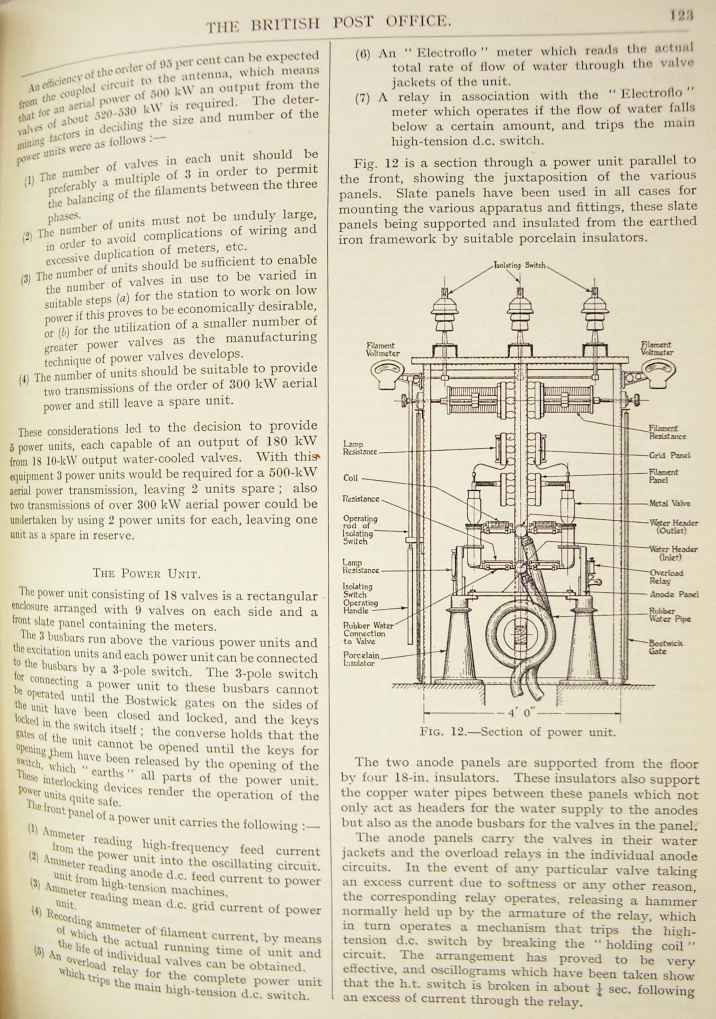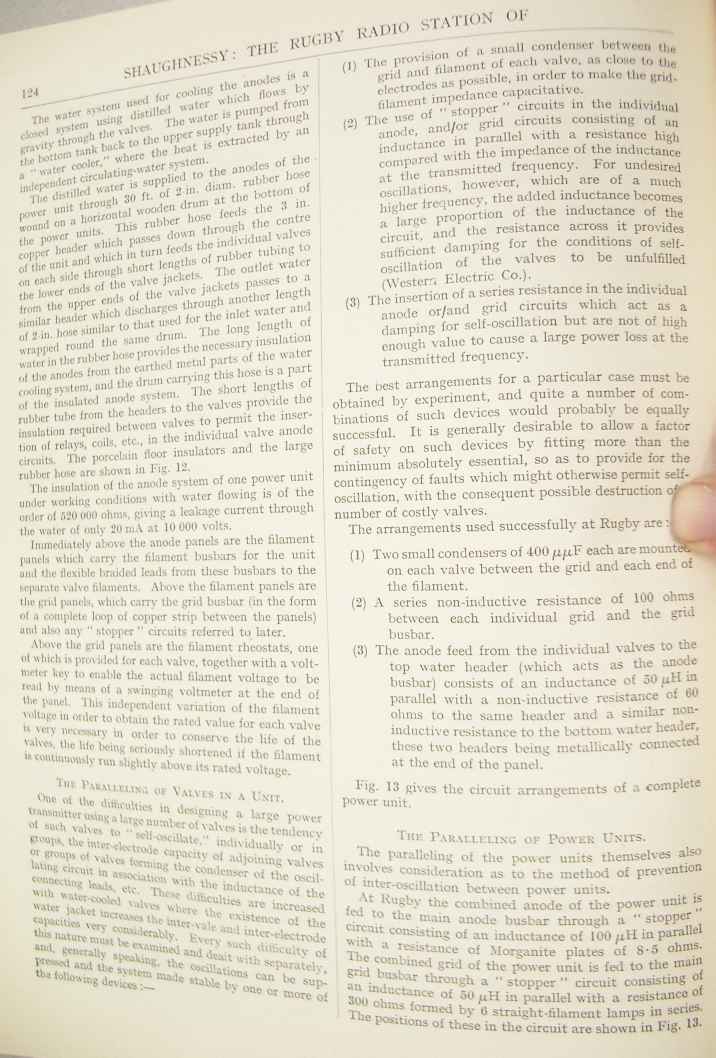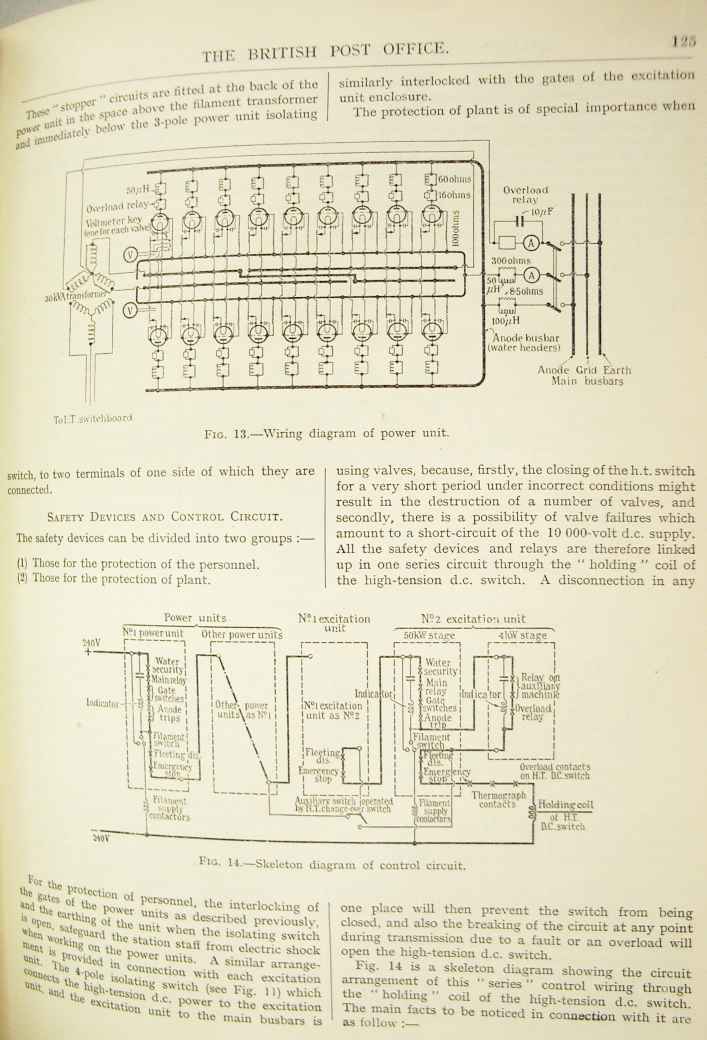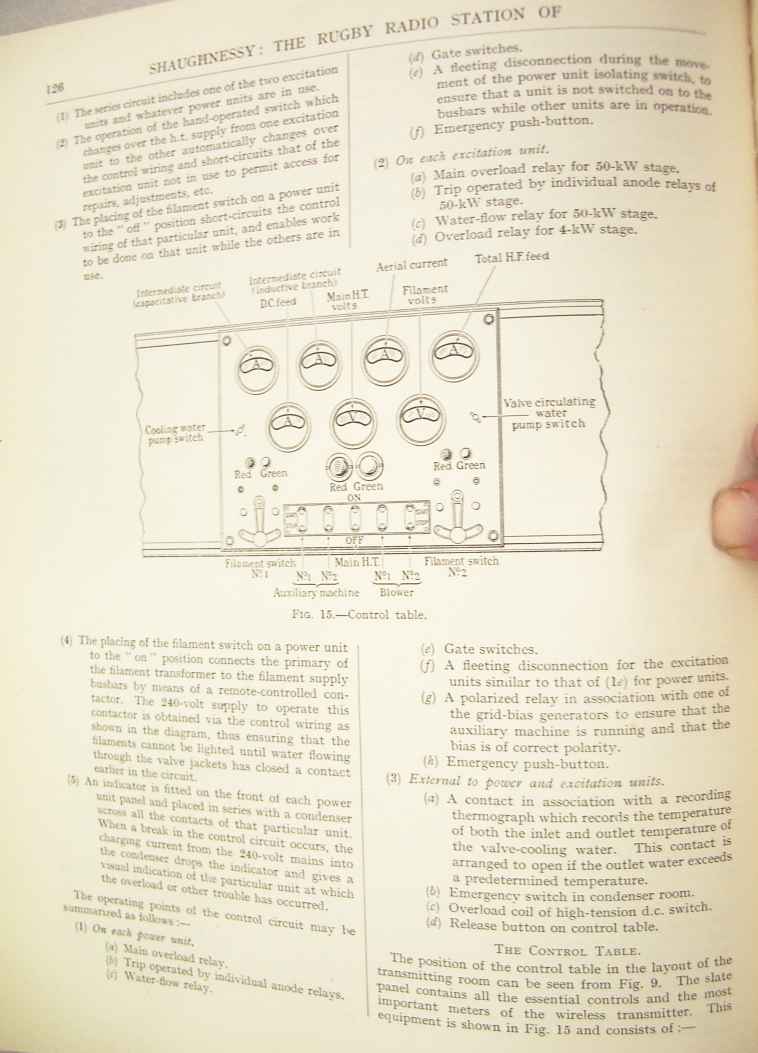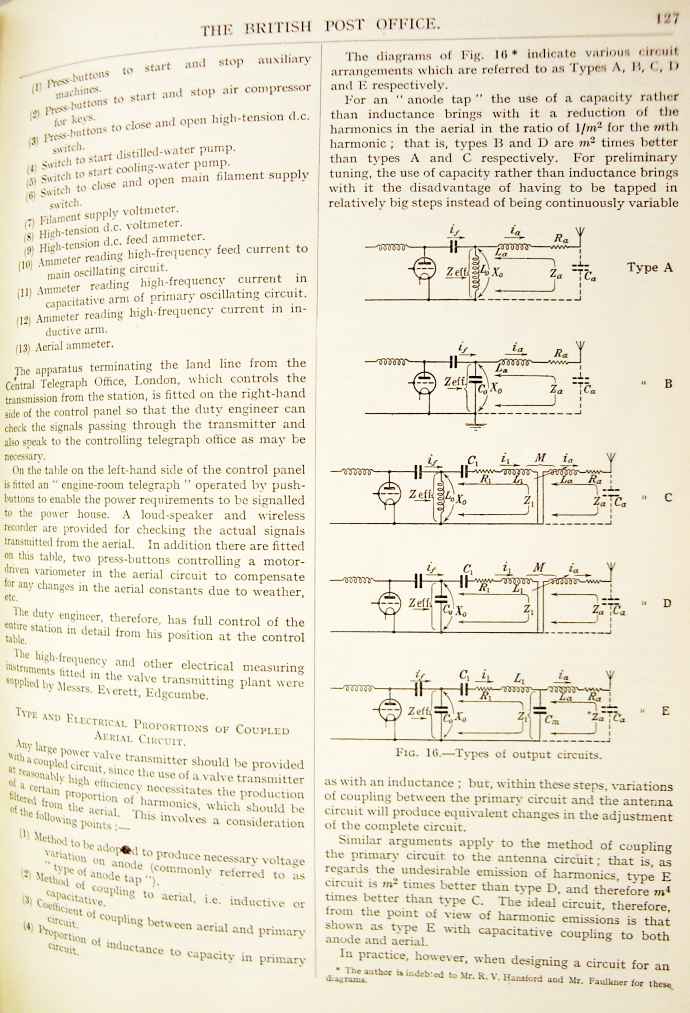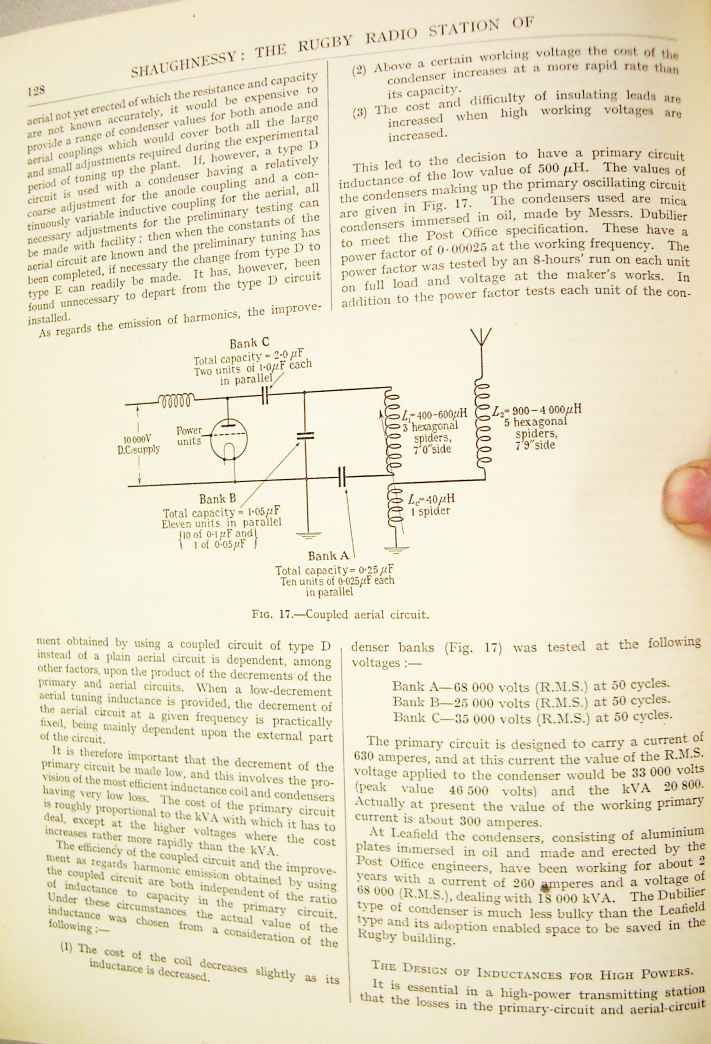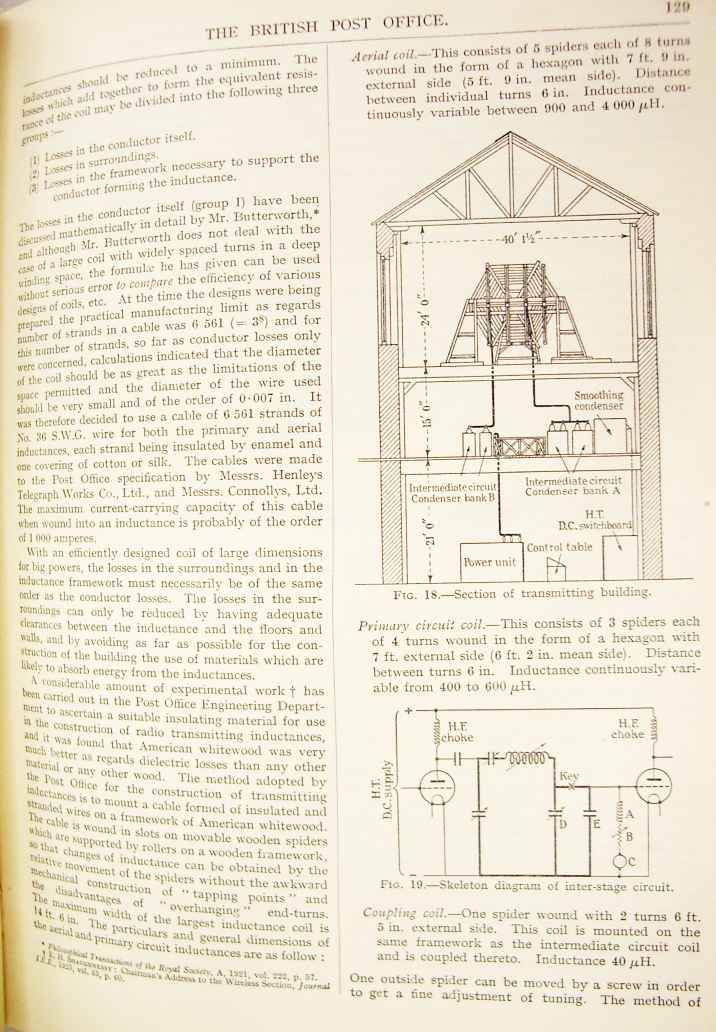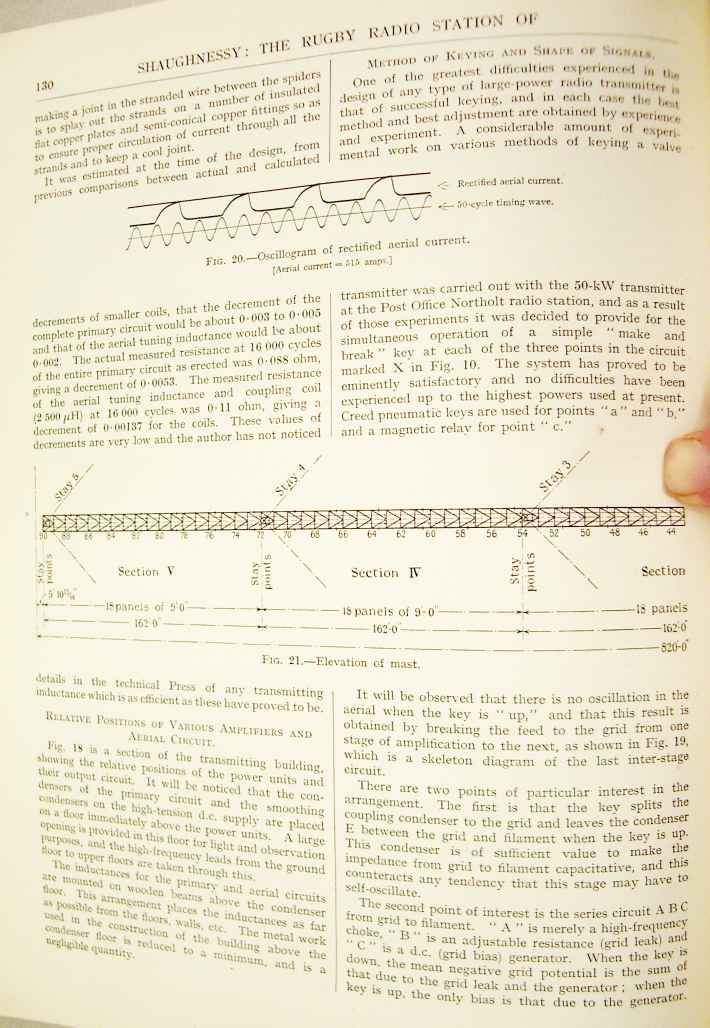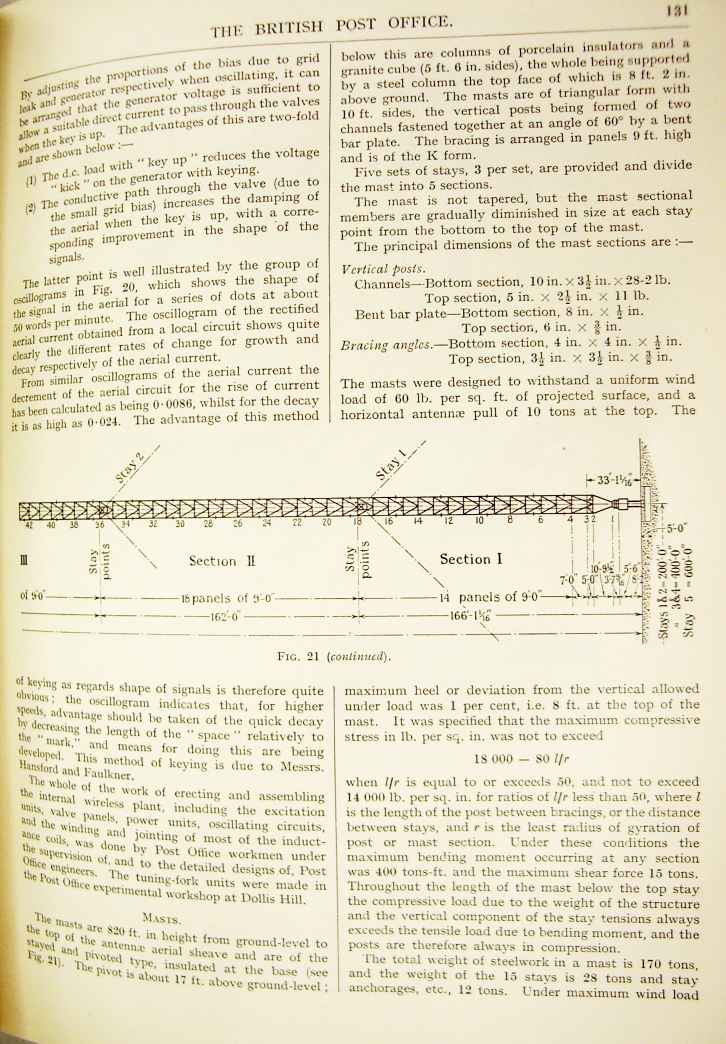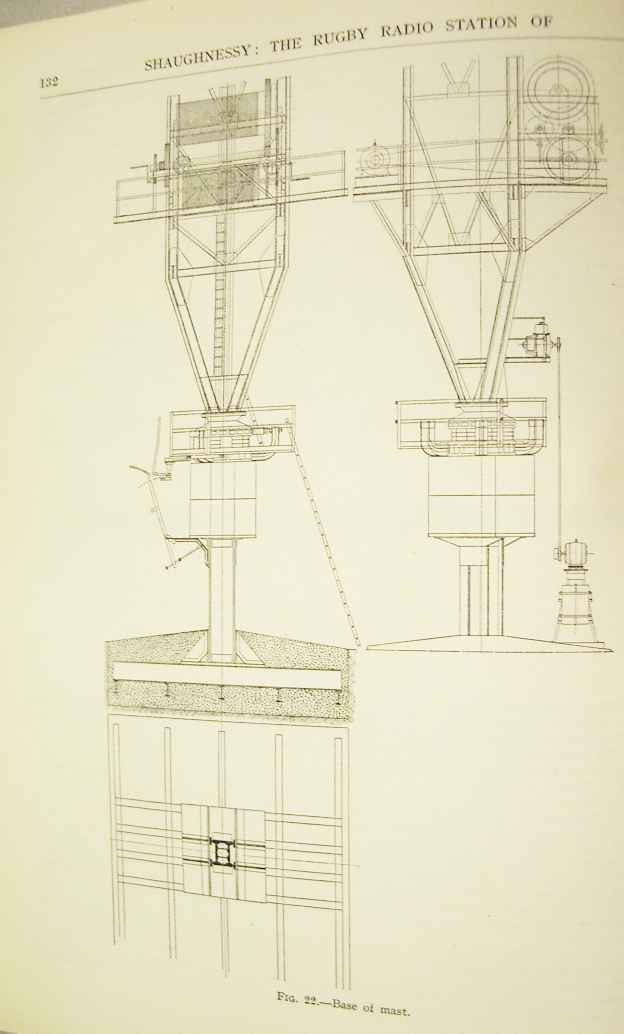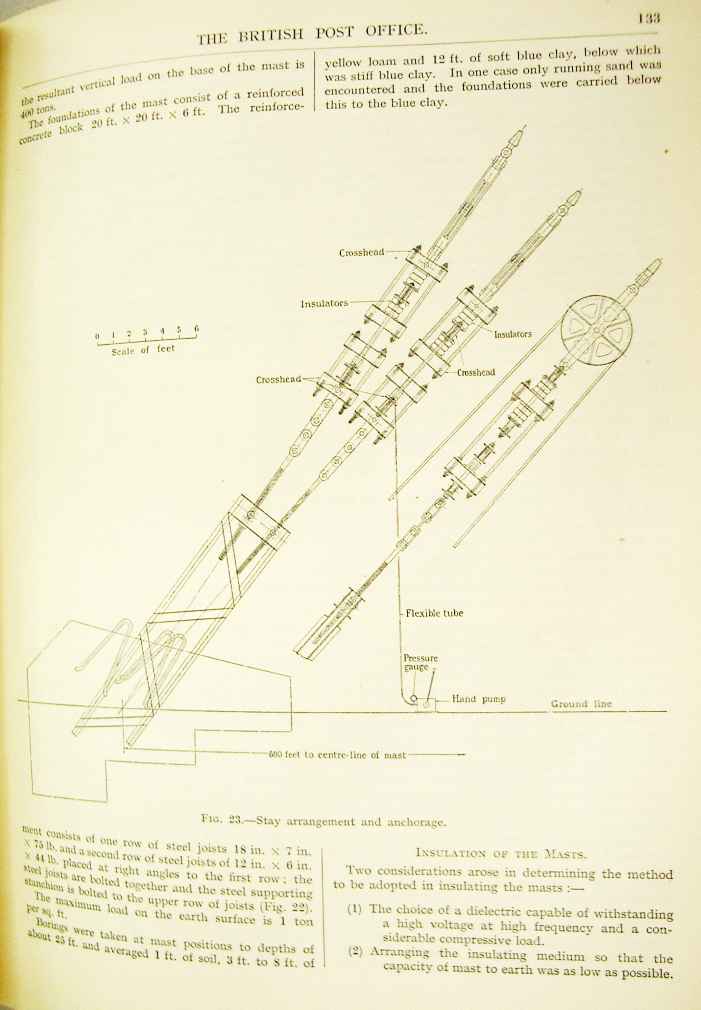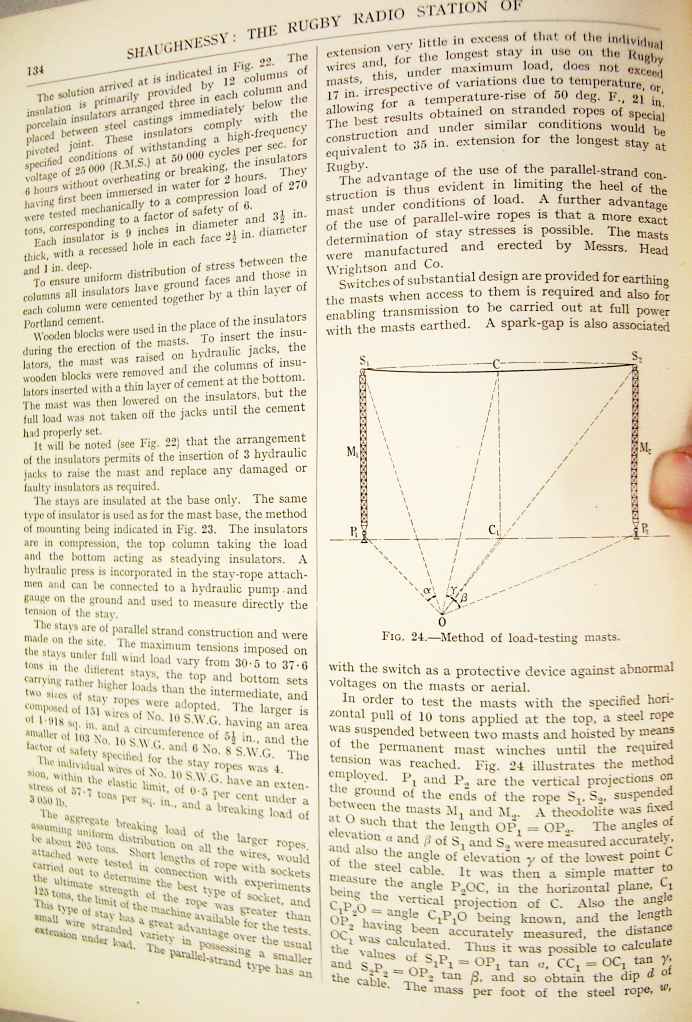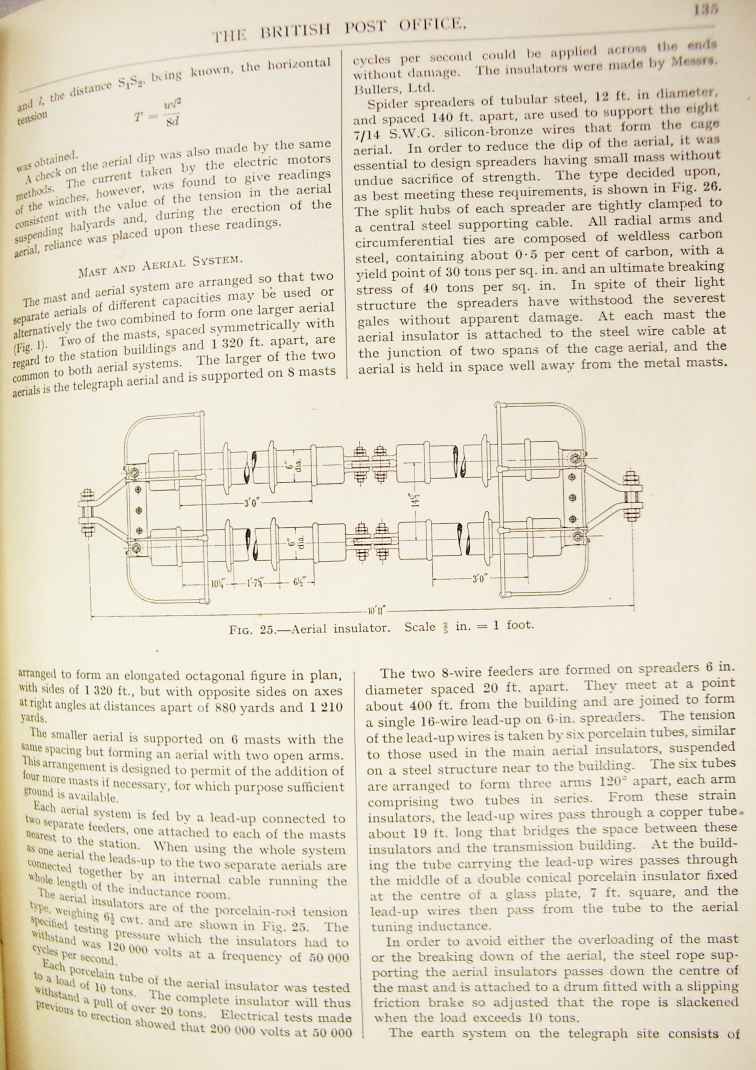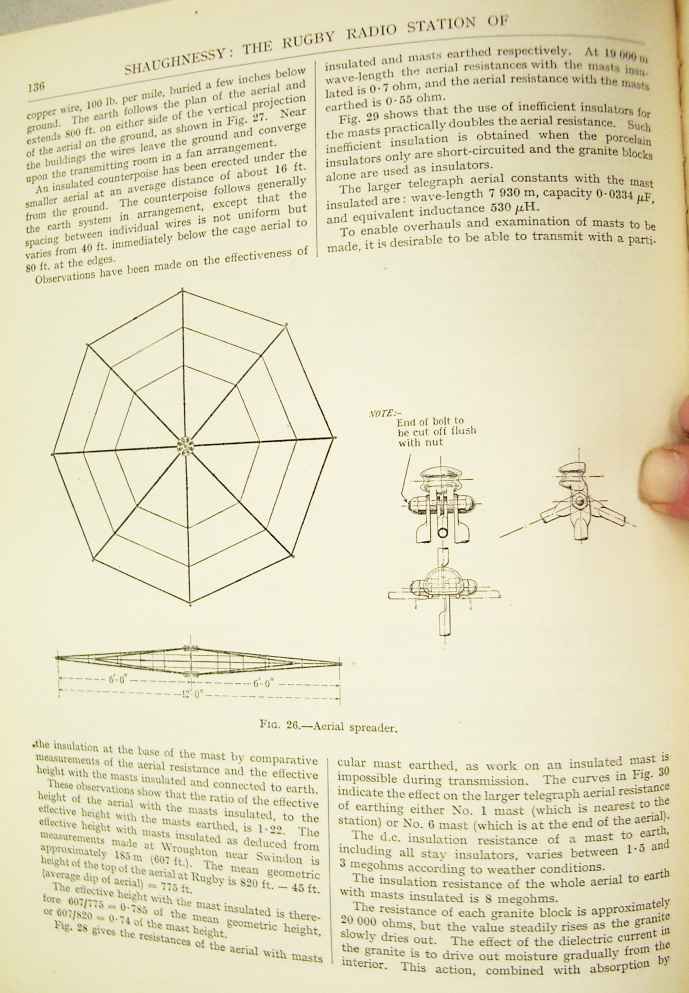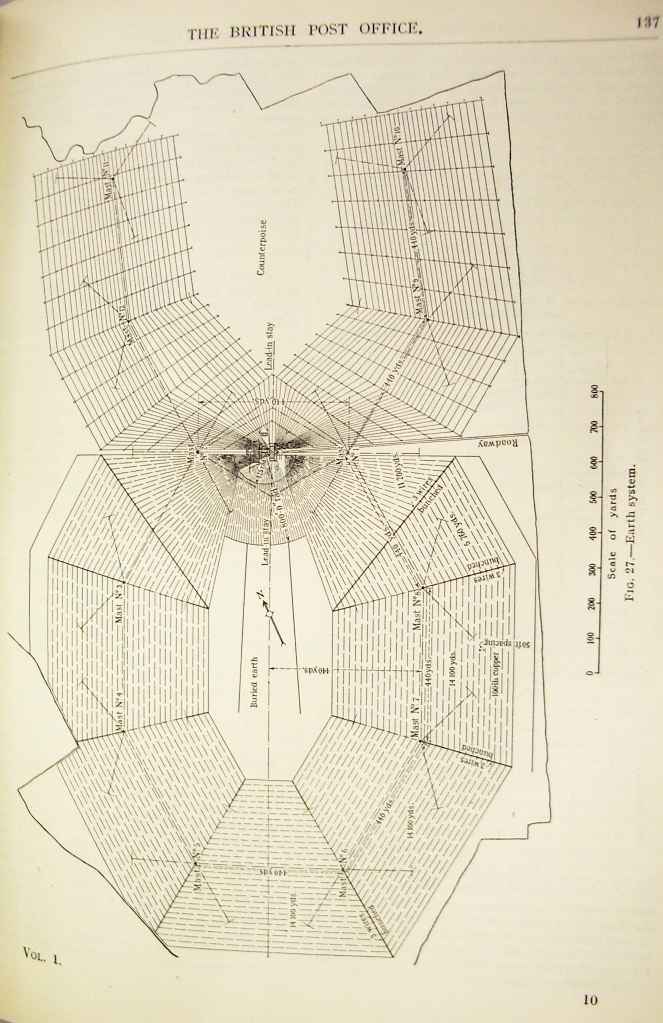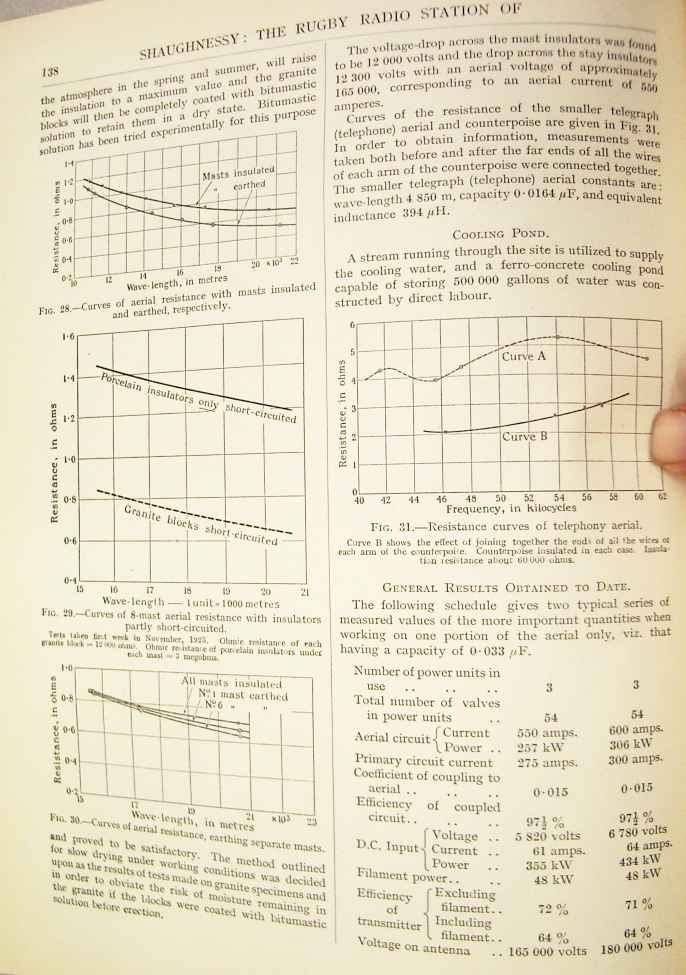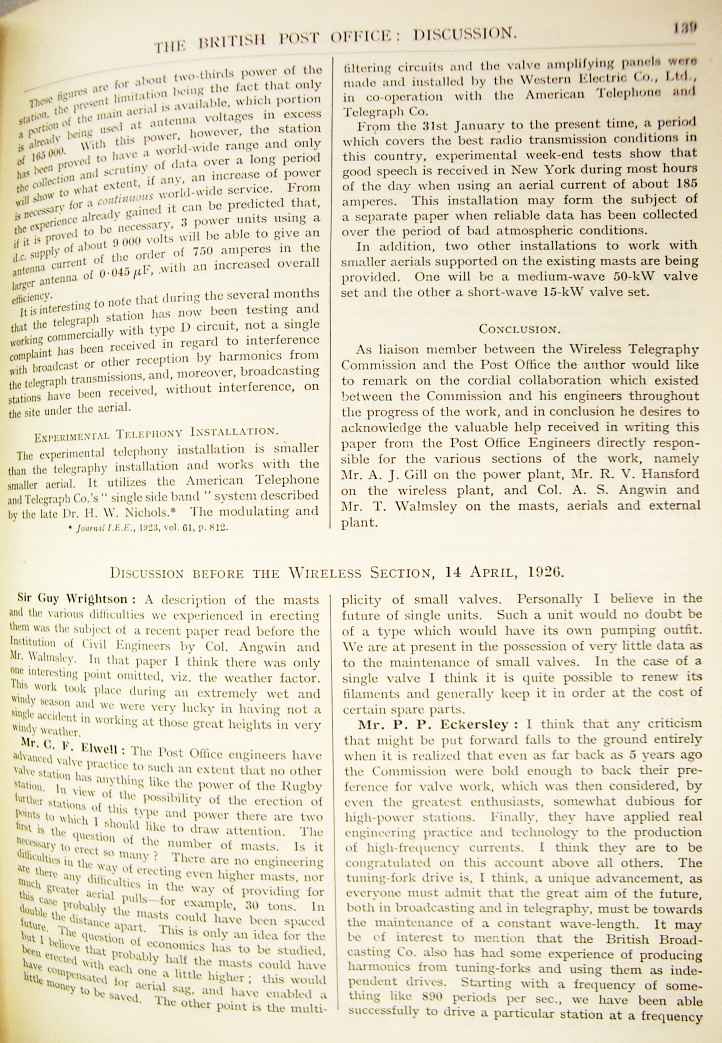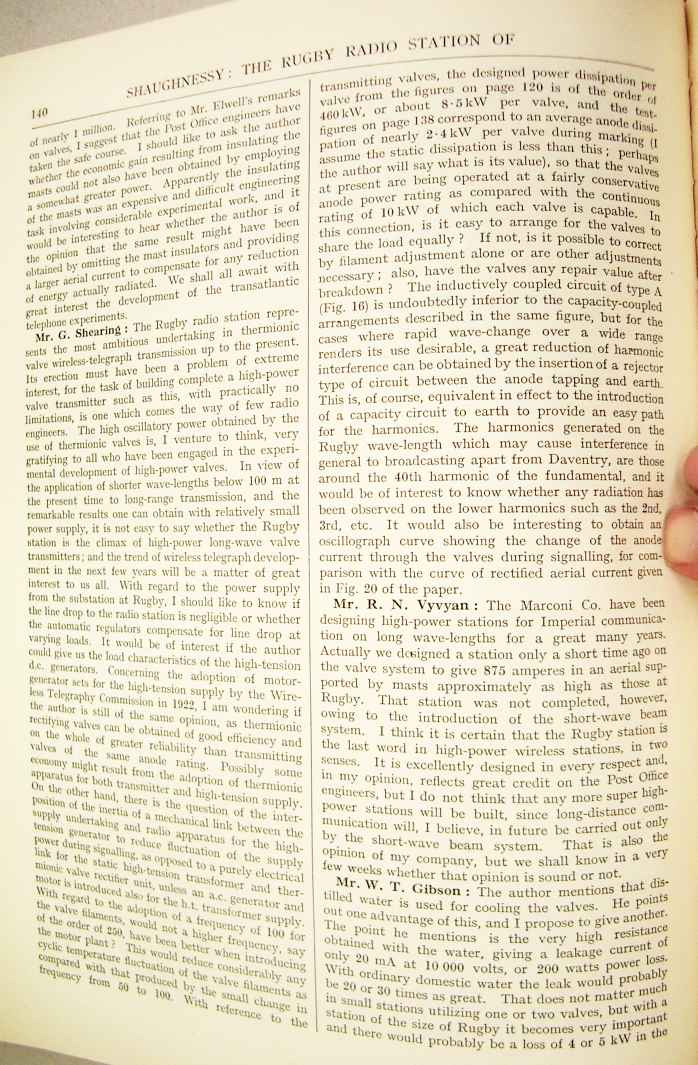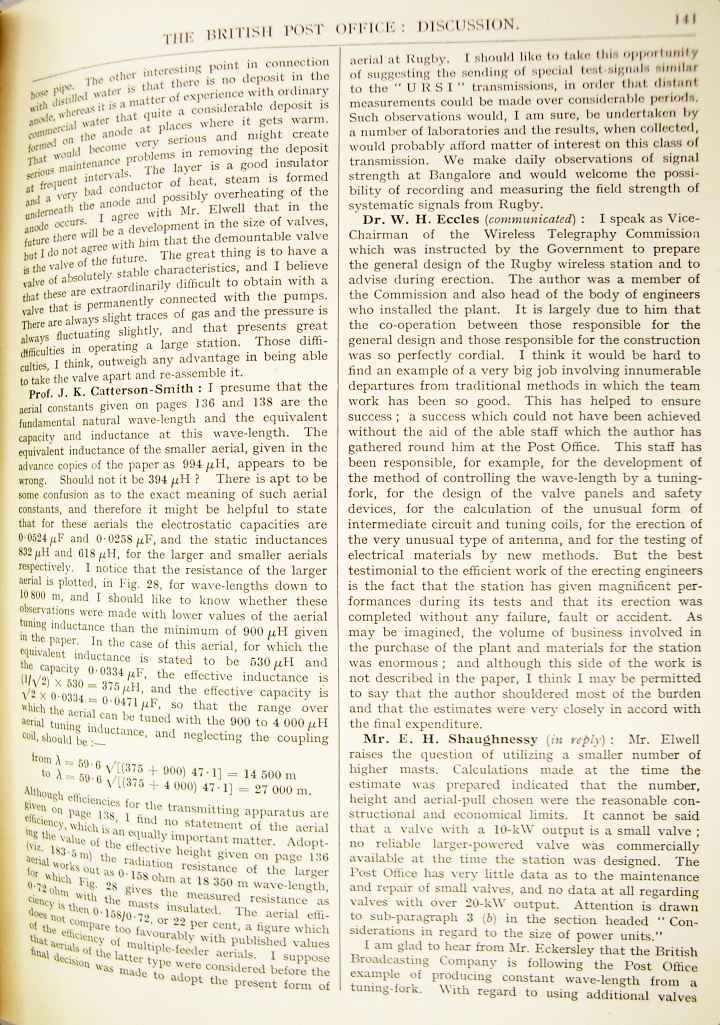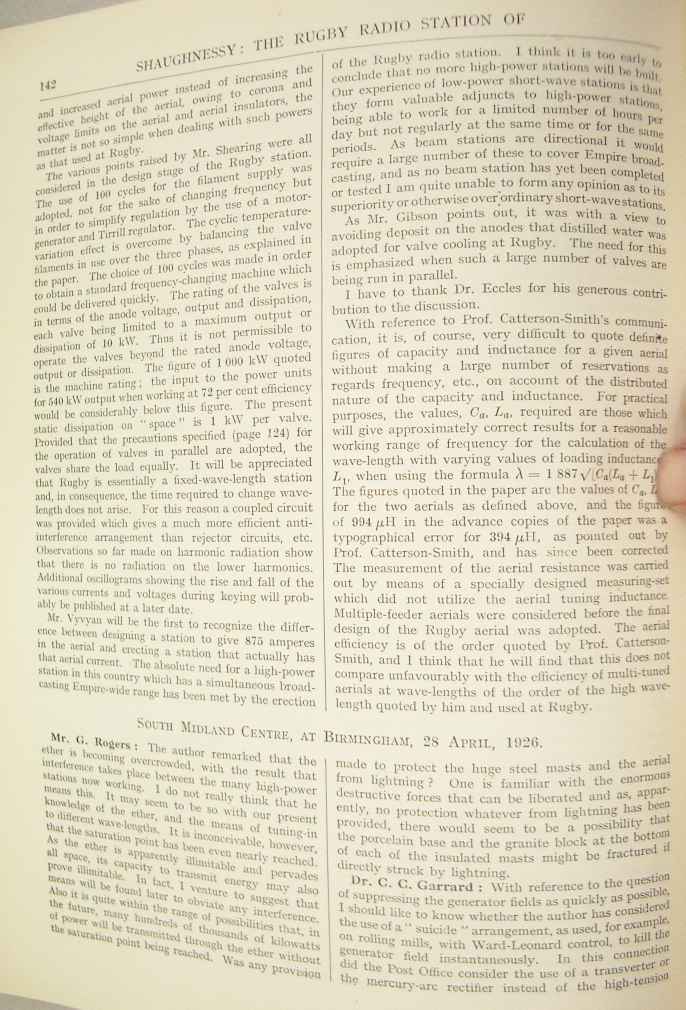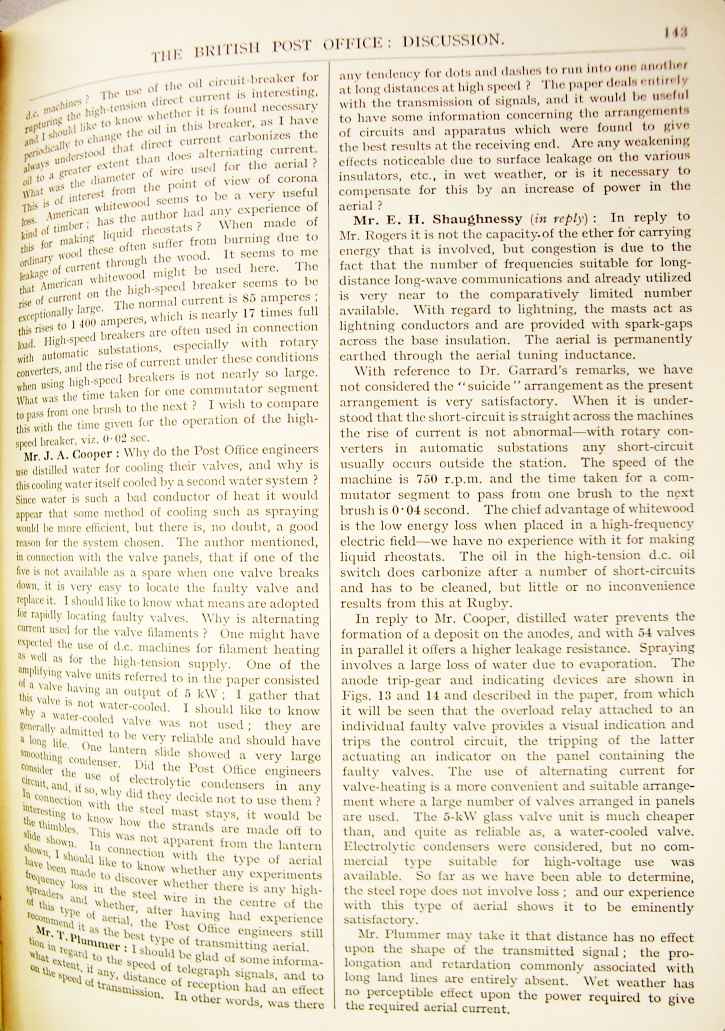Calling
the Empire!
A 16.6 kilohertz long
wave transmitter, for wireless telegraphy, for signalling all parts of
the
British
Empire !
I came across this amazing article whilst browsing in the basement of
the Monash University Hargrave Library. It was in an ancient bound
volume of Proceedings of the British IEE. I suspect this
volume has lain undisturbed for many years. There are some real gems in
this collection but this is true steam radio. This
transmitter , as you will read , was constructed to permit wireless
telegraphic from the British Isles to all parts of the Empire, and with
sufficient power , to be plainly audible day and night. I
expect that it was also biult with submarine warefare in mind, not to
mention the requirements of the Admiralty to signal British warships,
anywhere on the globe. It would have been justified in the
light of experience with long transnational telegraph and their
vulnerabliltiy in time of war. World War One had been
concluded only a few years before this project was conceived.
The images of this journal extract were taken with a small Pentax
camera in poor light in the library basement. The fat pudgy fingers are
mine!
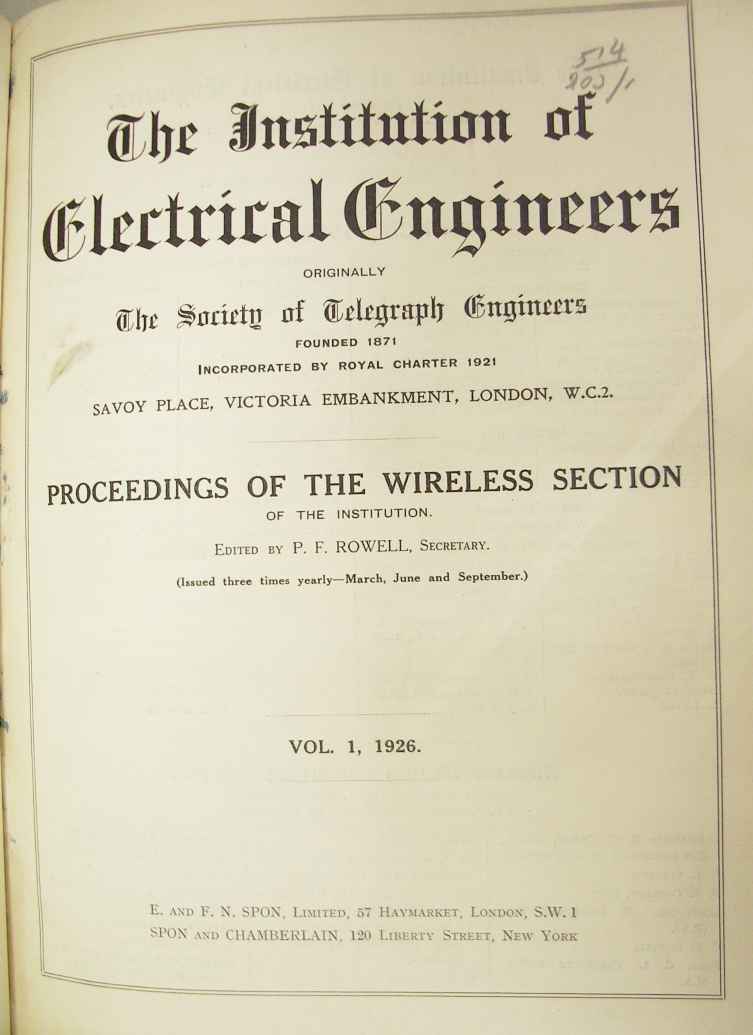 |
Extra-ordinay!
This was the state of the art in 1926. Most remarkable !
Having just read all that, here are my thoughts. This was 16Khz, some of the people working here would have been able to hear this!
All
day long. Not just the squeal of it, so you could block it out, but
this was telegraphy, you could not escape it. The article mentions that
there was an off air monitor, a loudspeaker, just so that the duty
engineer could here this squeal and "know that all was well". The
article mentions that its design was also to permit single sideband
voice modulation, a one transatlantic wireless telephone circuit. I
wonder how much a minute of talk time would have been billed for.
This experience is mentioned in other articles in this timeframe.
Single sideband must have been like black magic then. Have a look
at the primary frequency standard, a tuning fork. Maybe the operator
engineer could have heard if
the transmitter was off frequency! The followup discussion
mentions the reliability of vacuum tubes and concerns that there were
too many of them in this design. My question is, given the low
frequency, why wasnt an Alexanderson Generator used ? No use for voice
but certainly satisfactory for telegraphy. I wonder for how long
this service persisted. The discovery of short wave propagation
would have followed shortly after this station commenced operation.
The article does not mention what this cost to construct and
operate but it was not pennies! It was also interesting to read
the special precautions taken to ensure that this station did not
interfere with other broadcast services.
back to homepage
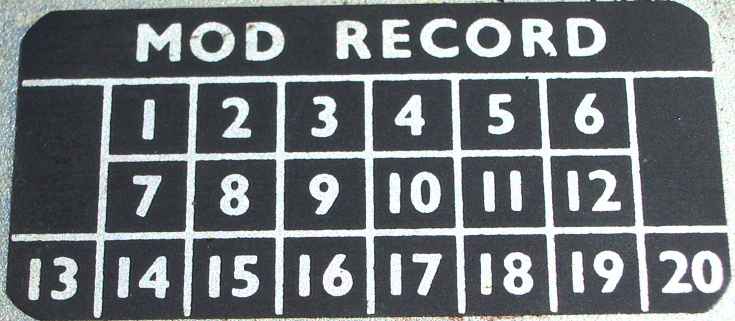
page created on Fri Aug 6 19:48:46 EST 2010
fixed html errors Mon Nov 22 18:37:57 EST 2010


